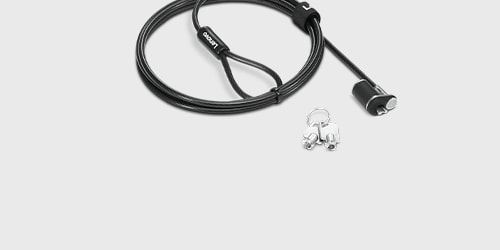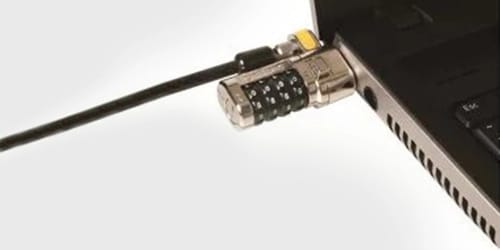-

 Accessibility
Accessibility -

 Contact Us
Contact UsSales:
Order Support:
-

 Rewards
Rewards -

 Account
Account -

 Cart
Cart -
Discover the latest PCs at Lenovo.com >
|
-
LenovoPRO Small Business Store
|
-

 Accessibility
Accessibility -

 Contact
ContactHelp placing an order
Business order help
Existing order help
-

 Rewards
Rewards -

 Account
Account -

 Cart
Cart
-
LenovoPRO Small Business Store
|
-

 Accessibility
Accessibility -

 Locator
Locator -

 Contact Us
Contact UsHelp placing an order
Business order help
Existing order help
-

 Rewards
Rewards -

 Account
Account -

 Cart
Cart
-
LenovoPRO Small Business Store
|
-

 Accessibility
Accessibility -

 Contact
ContactHelp placing an order
Business order help
Existing order help
-

 Rewards
Rewards -

 Account
Account -

 Cart
Cart
-
LenovoPRO Small Business Store
|
-

 Accessibility
Accessibility -

 Contact
ContactHelp placing an order
Business order help
Existing order help
-

 Rewards
Rewards -

 Account
Account -

 Cart
Cart
-
 Manage physical asset security protection for notebooks, notebook docking stations, desktops, and flat-panel monitors.
Manage physical asset security protection for notebooks, notebook docking stations, desktops, and flat-panel monitors. -
 Trust the industry standard that has been locking devices for more than 20 years to protect your valuable laptop and the sensitive information that's on it.
Trust the industry standard that has been locking devices for more than 20 years to protect your valuable laptop and the sensitive information that's on it. -
 Privacy ScreensKeep your confidential information private with laptop and monitor privacy filters from Lenovo, 3M and other top brands.
Privacy ScreensKeep your confidential information private with laptop and monitor privacy filters from Lenovo, 3M and other top brands.
What do cable locks do?
Any remaining questions about computer locks? Here are answers to some of the most common:
A laptop security lock is designed to make it harder for someone to steal your device. The locking mechanism keeps the laptop firmly in one place and prevents it from being moved.
Laptop security locks typically use a cable that connects to the device and wraps around an immovable object. The locking mechanism is then activated, securing the cable and keeping the laptop in place.
A Kensington lock is a laptop wire lock designed to fit into the Kensington security slot found on most laptop computers. It consists of a metal cable with a loop at one end and an adapter that fits into the laptop's slot at the other.
Knowing how to unlock laptop lock cable systems is just as important as installing them. The removal process varies depending on your locking system type but typically requires a key or combination code. Consult your product manual for specific instructions on how to remove yours.
Computer locks
Cable locks for laptops and computers
Cable locks are security devices designed to help protect laptops, computers, and other electronic devices. They are a worthwhile investment for anyone who relies on their device for business or personal use.
Laptop lock cables
Laptop lock cables are designed to fit into a device's side or back and secure it to a fixed surface. They are an asset for busy computer users who want to take their laptops anywhere without worrying about theft. Locks intended for laptops can come in several styles, although most use a slot lock combined with a security cable.
Types of laptop cable locks and slots
Not all laptops are built with the same attachment ports. Device size, thickness, and compatibility can vary by model. Further, some laptops have slots specifically intended for locking systems. The following is a brief overview of each type of security lock for laptop devices and how they work.
Kensington slot
Kensington slot locks are the most common form of laptop lock cable. They feature a unique loop-and-lock design that fits into the Kensington slot on compatible devices. The included cable is then used to mount the laptop to a secure surface, such as a desk or table.
Nano slot
Nano slot locks are an increasingly popular type of laptop cable lock. They work similarly to Kensington slot locks, except that they use a much smaller 135 mm3 keyhole-style slot as an insertion point.
Noble wedge slot
Measuring 3.2 x 4.5 mm, the Noble Wedge slot is designed to accommodate thin and sleek laptop models. It inserts into a compatible slot and locks in place with a push.
Combination cable locks
This type of lock offers users greater flexibility, as it does not require an existing slot or port on the device. Instead, combination cable locks use a separate attachment mechanism that can be used to secure the cable directly to the laptop's back surface. And unlike other slot-based computer locks, combination cable locks do not come with keys and instead rely on the user's personal combination code to disengage.
Computer lock cables
Computer lock cables attached to laptop locks can also differ from one another. While most are made of carbon steel, it's possible to find rubber-coated, uncoated, thick, and thin versions. Computer lock cable lengths range between six and ten feet, with thicker cables being more difficult to cut.
In addition to cable lock laptop systems, other computer security products are available, such as fixed laptop locking stations and attachments that directly secure a computer's bottom to the surface.
Types of computer cables locks and slots
Computer owners are afforded plenty of options when it comes to the configuration of their laptop locker cable. The most well-known, and what most people picture when they hear ‘cable lock for laptop devices,' is a single cord with a computer-attaching end and a looped tether end. But they also can combine multiple computer cable lock features and slot types into a single product. For instance, some Kensington locks are designed to fit into computers manually and disengage with a combination code rather than a key. Twin head locks are essentially a double version of traditional laptop locking cable systems, comprising two locking heads instead of one for multi-device protection.
How to choose the right cable locks for laptops or computers
The most important factor when selecting a laptop cable lock is the type of slot it needs to fit into. Devices are built in all sizes, so locking slots vary from model to model. Some laptops, especially older ones, don't have a security lock input. Start by researching your device's model online to learn its compatible format.
Next, factor in the environment you'll be using your laptop in. A sturdier lock is necessary for a public space, such as a library or classroom. Consider cable thickness and length as well; you'll want enough slack to comfortably move around while maintaining a secure connection.
Finally, take into account your budget and the strength of the lock's construction. Many locks are made of steel, but some are made of plastic or other materials that can be easily cut. Before you make your purchase, read reviews and research to ensure you're getting the best product for your needs.
Best cable locks for laptop and desktop computers at Lenovo
Lenovo offers a litany of products designed to protect laptop and desktop PCs. This includes in-house Lenovo brand cable locks and options from third-party suppliers. All come with a guarantee of quality that you can only get from Lenovo. Shop today!






